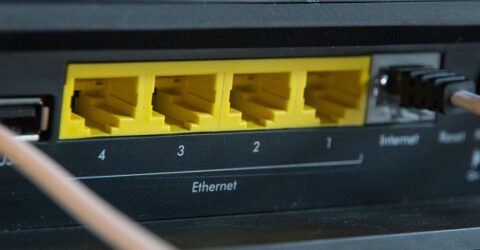Wifi 7 is coming… here’s what we know so far.
We explain why the next generation of broadband routers will be astonishingly fast, and probably a lot more expensive.

Readers of a certain age will have fond memories of Tomorrow’s World, where seemingly outlandish technologies were showcased with scientific matter-of-factness.
This was the first place many people saw their first mobile phone, touchscreen interface, robotic vacuum cleaner and camcorder.
These technologies all went onto become staples in modern homes as we embraced the age of microprocessors and the internet.
It’s been almost thirty years since Tomorrow’s World showcased the latter, proclaiming that it would expand beyond being a text-based service viewed on a desktop computer.
Today, the concept of wireless internet access around the home is commonplace, and we take WiFi for granted.
What we don’t take for granted is seamless performance. In many homes, WiFi is sluggish and prone to momentary dropouts, with limited range and periodic interference.
That’s why the development of WiFi 7 is being closely studied by ISPs and industry experts alike.
Seventh heaven
If you’re surprised to discover WiFi has entered its seventh generation, you’re not alone. Most households in the UK are still using the fifth generation.
Also known as 802.11ac, WiFi 5 was developed in an era before smart homes and the Internet of Things.
WiFi 5 is capable of handling eight streams simultaneously, while the yet-to-be-widely-adopted WiFi 6 standard (802.11ax) increases this to twelve.
WiFi 6 will also be better suited to 4K streaming, with higher data transfer rates than we’re currently used to.
So much for the present – what about the future?
Sporting the technical moniker 802.11be, WiFi 7’s development is presently focusing on speed, amid predictions it could be four times faster than WiFi 6.
In a recent test, computer chip manufacturer Intel managed to transmit wireless data at speeds of over 5Gbps.
When you remember that the fastest internet connection into our homes is currently 1Gbps, it demonstrates how far into the future WiFi 7’s developers are looking.
It’s been estimated tomorrow’s WiFi could handle data speeds of up to 45Gbps, though that’s in a world without signal obstructions – and one where hardware works perfectly.
It will certainly minimise existing scourges like interference and latency, with the latter usually forcing gamers to connect hardware devices to their router via an Ethernet cable.
WiFi 7 will be able to split data transfers from a single device across the 2.4, 5 and 6GHz frequencies simultaneously, optimising the distribution of digital data.
Other benefits are highly technical – we won’t go into the advantages of higher quadrature amplitude modulation here.
Is this going to happen soon?
Realistically, it’s probably going to be a while before homes in the UK benefit from this new technology.
The tri-band WiFi 6E (which can transmit data at high speeds across the little-used 6GHz frequency band) has yet to be widely adopted, despite its obvious benefits.
It’ll take several years for hardware and device manufacturers to routinely roll out this technology to consumers.
After all, it’s not just your broadband router that will require upgrading. Any equipment connecting to it must also support the new standard.
The news that router manufacturer TP-Link is rolling out a WiFi 7 product range should therefore be viewed in context; one of its routers is expected to be priced at $700.
That’s far more money than any ISP would be willing to invest in a domestic router, which may or may not be returned at the end of a broadband contract.
For now, take comfort next time your WiFi drops out, slows down or struggles to cope. It won’t be like this forever…






